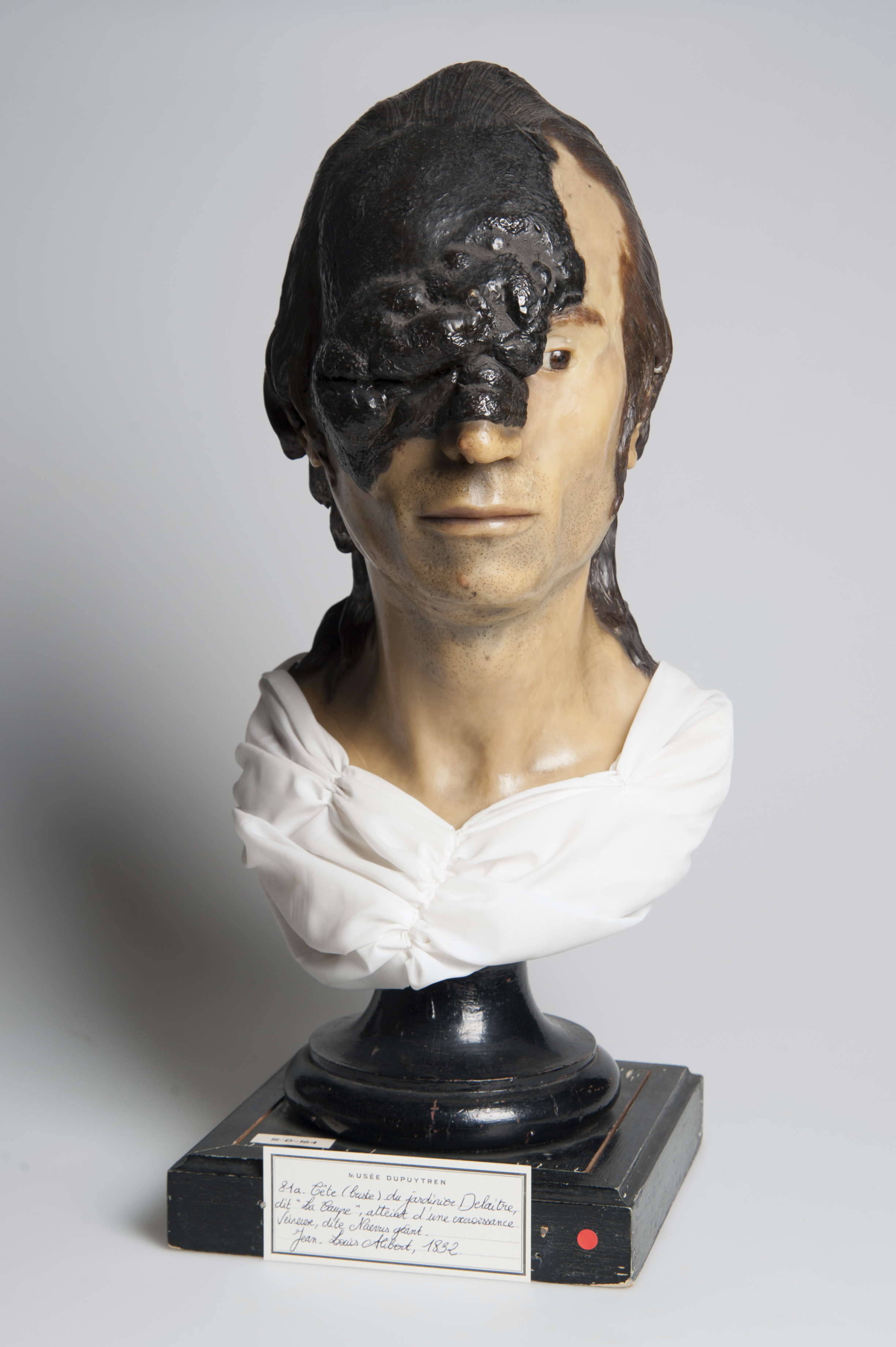[Musealia : Wax bust of Delaître, known as "La Taupe” (The Mole)]
Every month, Sorbonne University invites you to discover an object from its heritage collections. This month, discover the wax bust of Delaître, known as "La Taupe” (The Mole).
This extremely realistic wax bust is one of the oldest pieces in the "Musée Dupuytren” (Dupuytren Museum), whose collections are kept on the Pierre and Marie Curie campus of Sorbonne University. Attributed to the surgeon and ceroplast André-Pierre Pinson (1746-1828), it depicts the gardener Philippe Delaître. When the Royal Society of Medicine considered his case in 1786, he was in his thirties, lived in Meaux and “came to Paris twice a week to sell his vegetables”. The tumour that covered a large part of his face “gave this gardener the nickname of the Mole (la Taupe), and he is better known by this name in the suburb of Meaux where he lives than by Delaître”.
We all have nevi (or moles), made up of the aggregation of melanocytes, but the giant nevus that gradually covered the gardener Delaître's face attracted the attention of many scientists at the end of the 18th and beginning of the 19th centuries, from the chemist Fourcroy to Jean-Louis Alibert, the doctor who founded dermatology in France, who recounts "the story of the gardener Delaître" in his Monographie des dermatoses ou précis théorique des maladies de la peau (1832).
It was during this period that Pinson, who exhibited his first sculpture at the Salon du Louvre in 1771, painted Delaître's portrait. The son of a surgeon and a surgeon himself, he put his medical knowledge to good use in the field of ceroplasty, and in 1795 was appointed "wax modeller" at the Ecole de Santé. The Dupuytren pathological anatomy collections contain nearly 300 waxworks, mostly made by the greatest ceroplasticians of the 19th century (Tramond, Baretta, etc.) and which, like Delaître's portrait, allowed pathologies which, for many, still remained mysterious to be "fixed" for scientific and educational purposes.
By Eloïse Quétel, head of the Dupuytren pathological anatomy collections, Heritage Unit, Sorbonne University Library.
Data sheet
- Name : Wax bust of Delaître, known as "La Taupe” (The Mole)
- Inventory number : MD.S.2015.0.2787
- Description : H 51cm ; P 22,5cm ; l 20,4cm ; poids : 3,488 kg
- Date : c. 1780 – 1820
- Place of storage : Dupuytren pathological anatomy collections
Bibliography
- Jean-André PEYSSONNEL, Traité du corail, 1753, in Philosophical Transactions of the Royal Society , Londres, n°47, p. 445-469.
- Henri de LACAZE-DUTHIERS, Histoire naturelle du corail: organisation, reproduction, pêche en Algérie, industrie et commerce, Paris, 1864
- Daniel FAGET, Daniel VIELZEUF, "Le vase et le microscope", Rives méditerranéennes, n°57, 2019, p. 157-180.
- Giorgio TSOUNIS, Sergio ROSSI, GRIGG Ricardo Will, Lorenzo BRAMANTI, Josep-Maria GILI, Oceanography and Marine Biologie : An Annual Review, n°48, 2010, p. 161-212.
Find here all the articles of Musealia.




